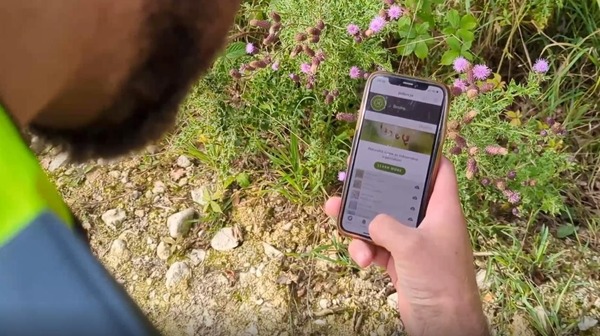Four ways agri-tech helps farmers protect biodiversity
World Habitat Day takes place on 6 October and to reflect on the role of biodiversity in agriculture, the UK Agri-Tech Centre is sharing four ways that agri-tech can help farmers to protect biodiversity on their farm whilst building resilience.
This year, World Habitat Day is aimed at raising awareness of environmental sustainability, urban development and advocating for positive changes in living conditions whilst creating safe and inclusive communities.
There is an evolving role for innovative monitoring technologies and methods to support those working in the agricultural industry to measure and manage biodiversity.
The UK Agri-Tech Centre, in collaboration with industry experts, has been advancing technologies that enable habitat mapping, species abundance tracking and meaningful engagement with landowners and communities—helping to reconnect people with nature and demonstrate the value of conservation efforts.

Raising awareness of these topics can help to promote more effective conservation policy and management, particularly when used on farming landscapes.
There are a range of biodiversity monitoring approaches that combine different technologies, data collection methods and analytical tools, enabling us to assess ecosystem health, track species and understand environmental change at various scales.
Below are four key approaches currently being used in the agricultural industry:
1. Remote sensing
Remote sensing technologies enable us to capture data on the physical characteristics of an area without a physical presence. There are a wide range of different remote sensing technologies and various applications for biodiversity monitoring, from LiDAR (Light Detection and Ranging) surveys and drones to earth satellite observations. These tools are particularly useful for top-down, large-scale assessments and monitoring of habitats, helping us track changes over time. One company applying this approach is Senus, who use remote sensing to measure and verify natural capital on-farm.
2. Bioacoustics
Bioacoustic technologies allows us to listen, record and analyse living organisms in an ecosystem. It is typically used to record species diversity and abundance at a local spatial scale and can be combined with AI and machine learning to analyse data and provide biodiversity assessments in a local region. Novel methods of bioacoustics include the deployment of autonomous recorders capable of automatically collecting data. It can be used to record sounds in a variety of ecosystems to monitor pollinators, birds, moths, bats, whales and more. One example of a company using this technology is Chirrup AI, who monitor biodiversity on farms using birdsong to help farmers and land managers monitor biodiversity and measure change at scale.
3. Environmental DNA (eDNA)
Environmental DNA (or eDNA) detects traces of living organisms (such as dead skin cells, mucus and faeces) using DNA from environmental samples (such as soil, water and air) to indicate the presence of species. It is extremely useful for identifying species that are often missed in traditional surveys, including invertebrates, microorganisms and bacteria. This approach expands the scope of biodiversity assessments and can highlight key indicators of ecosystem health, such as the presence of mycorrhizal fungi. Organisations currently practising eDNA sampling and analysis include Nature Metrics who work on end-to-end solutions for biodiversity reporting, and SimplexDNA, who work on generating findings to provide information on the biodiversity of the sampled environment.
4. Citizen science
Citizen science involves non-technical volunteer monitoring, making it an inclusive, cost-effective, engaging and educational method. Participants contribute to species identification, population surveys and habitat assessments, helping build large-scale biodiversity datasets. It is a powerful tool for public engagement, education and awareness on nature and conservation. When combined with AI and machine learning models, species identification can be automated, validating data quality and reach. Good examples of these methods in action are organisations such as Pollenize, which delivers science-led, nature-based solutions to restore pollinators and biodiversity, and Merlin, which allows you to identify birds by their appearance and sounds via an app.
If you’d like to find out more about the work the UK Agri-Tech Centre does, and the projects it is involved in, visit www.ukagritechcentre.com
To hear our Head of Sustainability, Paddy Tarbuck, talk about the importance of this topic, watch the short video here: World Habitat Day.
- Log in to post comments

